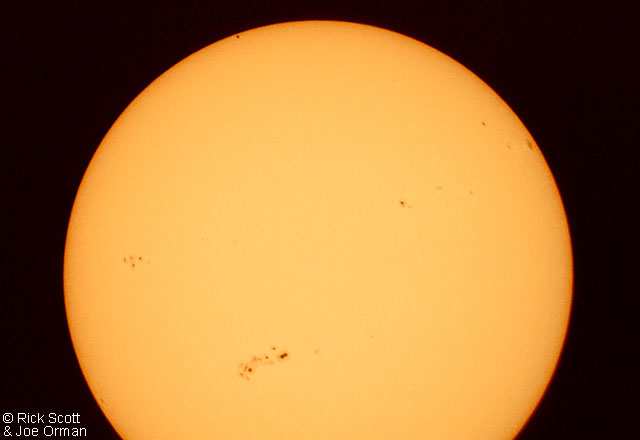

About 13 times every century, the planet Mercury passes in front of the Sun as seen from the vantage point of our little planet Earth. My friend Joe Orman and I took this photograph (his camera, my telescope) of a grazing transit that took place on 15 November 1999. Mercury can be seen as the very small black dot to the left of the top edge of the Sun. Notice how small Mercury is in comparison to the Sun. This is the only way to directly see with human eyes the vast difference in size between the Sun and a small planet like Mercury without going into space! A grazing transit takes place when the transiting planet spends its time very close to the edge or limb of the Sun. This is the first grazing transit of Mercury to occur since the invention of the telescope, and the next one will occur in the year 2391, so this is a very rare event. The only other planet that can transit the Sun is Venus. The next two transits of Venus will occur in 2004 and 2012.
Joe's camera is an Olympus OM-1. My "Celestron 8" telescope was used as a telephoto lens for the camera. It has a focal length of 2032mm and an aperture ratio of f/10. The film is 50 speed Fuji slide film exposed for 1/30 of a second through a solar filter (ND5). The photograph was taken at mid-transit, the point when Mercury is the furthest in from the edge, at about 2:40 PM MST.
I scanned the image with a Nikon Coolscan LS-2000 and used Adobe Photoshop for contrast correction and very mild sharpening. Photograph by Rick Scott and Joe Orman.
Updated: 29 November 1999